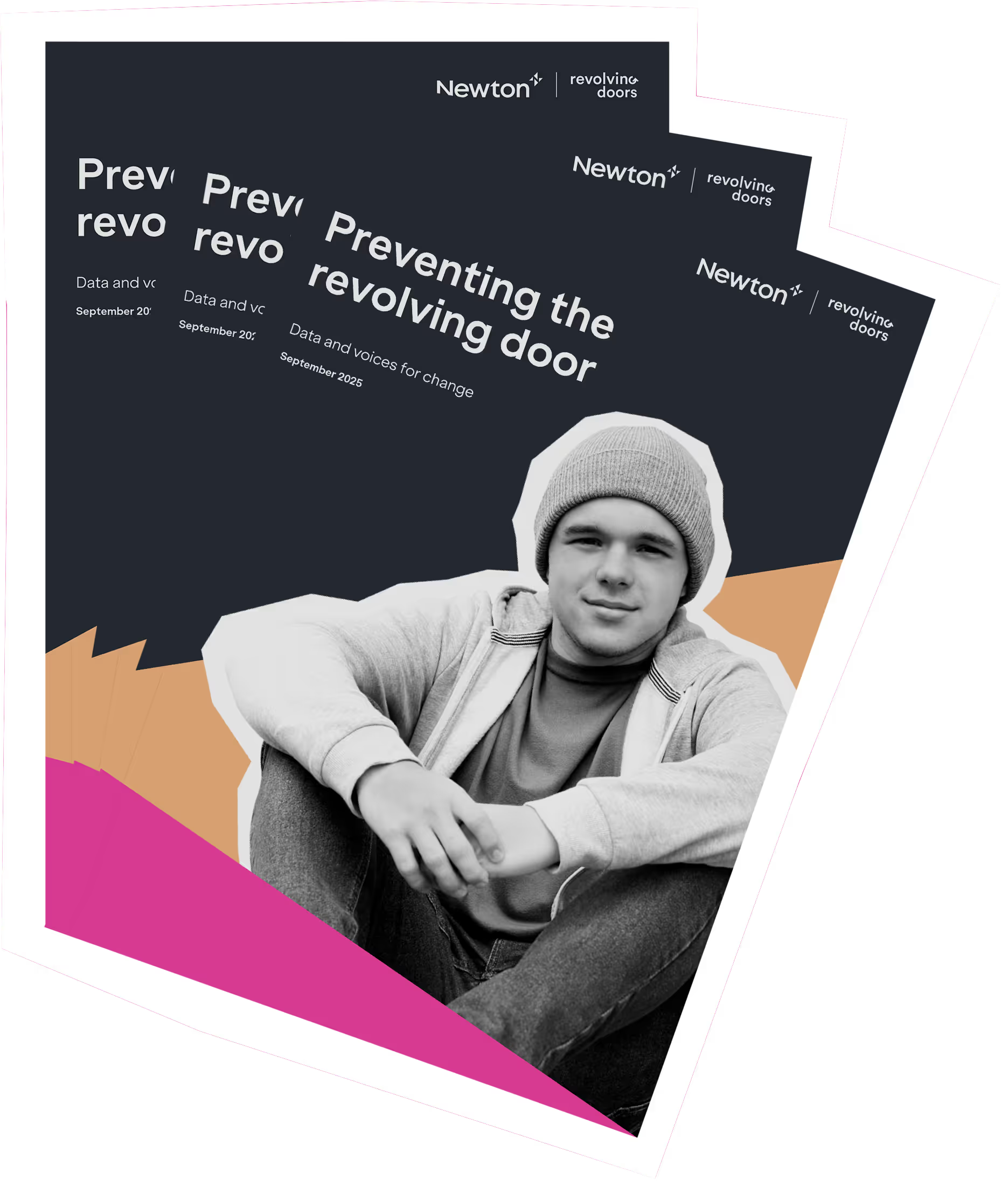
Combining lived experience with cutting edge data
Despite years of attention, responses have too often focused on managing the visible symptoms — short prison sentences, repeat arrests and fragmented interventions — rather than addressing the root causes. A lack of joined-up data has made it harder still.
This programme set out to close that gap. By combining lived experience with cutting-edge data analysis, the aim was to move beyond statistics and stereotypes, and build the clearest, most honest understanding yet of the revolving door cohort. This provides the evidence base needed to challenge bias, identify missed opportunities, and design smarter, preventative solutions that work for people and services alike.
This report is the result of two complementary approaches to understanding the revolving door cohort:
Revolving Doors led the qualitative work, carrying out 20 in-depth interviews with people who have had repeated contact with the criminal justice system. These conversations explored early life experiences, drivers of offending, interactions with public services, and the factors that enabled or blocked meaningful change.
The narratives revealed consistent patterns of trauma, unmet need and system failure, but also resilience, agency and hope. These insights provided a powerful human perspective, grounding the analysis in lived experience and ensuring recommendations are rooted in reality.
Newton and Xantura, part of the Newton Group, led the quantitative analysis and economic modelling, bringing together previously disconnected datasets across multiple public services to create a holistic, anonymised view of individuals and households.
This includes:
- Data integration: Structured data (such as offence records) was combined with unstructured information from case notes, analysed using advanced text analytics and AI to identify risks and vulnerabilities that traditional datasets often miss.
- Behavioural mapping: This allowed patterns of offending and unmet need to be mapped at both individual and cohort levels, visualised through a dashboard that showed the size and shape of the revolving door cohort within a region and down to local authority level.
- Forecasting: Newton used forecasting and modelling techniques, alongside published socio-economic indices, to estimate how the cohort varies across geographies nationally.
- Costing the impact: The economic and social costs were calculated using a HM Treasury-approved cost of crime methodology, producing robust (and conservative) figures aligned with public sector standards for assessing the impact of crime.

Why this matters
By bringing together lived experience and advanced data analytics, this research presents the strongest evidence to date of both the human and economic imperative for change. It shows how unmet needs and missed opportunities result in reactive, high-cost interventions, and sets out how earlier, smarter, person-centred support could break the cycle of reoffending.


Useful links

Tackling persistent crime by addressing the root causes, not just the symptoms.

This research draws on in-depth lived-experience interviews and powerful cross-service data analysis to demonstrate how unmet need and miss opportunities create a revolving door effect.

A collaborative approach, where lived experience meets cutting-edge data analytics.
Read more about the research process, key findings, and expert recommendations.


